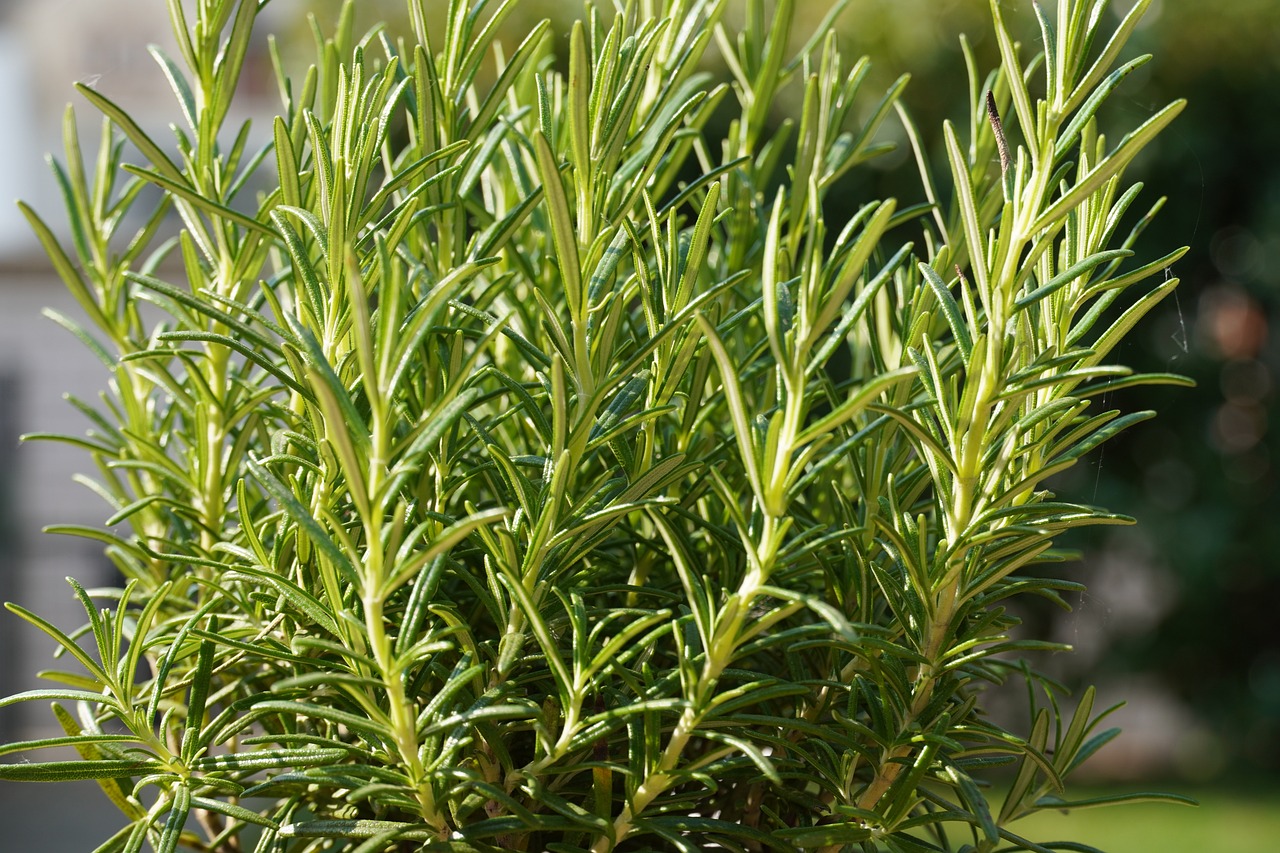Rosemary is a beautiful and aromatic herb that has been used in gardens, kitchens, and medicine cabinets for centuries. It is a member of the mint family and has a distinctive pine-like fragrance that makes it a favorite of gardeners and cooks alike. In this article, we will delve into the world of rosemary.
Appearance and History
Rosemary is an evergreen shrub that can grow up to 6 feet tall in warm climates. Its narrow leaves are approximately 1 inch long and resemble needles, giving it a delicate and refined appearance. The leaves are a gray-green color on top and silver underneath. When in bloom, rosemary has small, pale-blue flowers on stalks that rise above the foliage, making it a striking and sweet-smelling addition to any garden. Rosemary is a perennial plant in warmer climates, but it can be grown as an annual in colder regions.
Rosemary’s origins are in the Mediterranean, where it was used as a cooking herb and praised for its medicinal properties. The ancient Greeks and Romans believed that rosemary had memory-enhancing abilities, leading to its association with remembrance and being an ingredient in wedding bouquets.
Culture and Planting Times
Rosemary prefers well-drained soil with a slightly alkaline pH and plenty of sunlight. It can be grown in containers or in the ground, depending on your space. Planting times can vary depending on your location, but it is generally best to plant in the spring after the last frost or in the fall before the first frost.
Watering and Fertilizing
Rosemary is drought-tolerant and prefers to be on the dry side. Over-watering can cause root rot, so it is important to let the soil dry out between watering. When you water, give it a deep soak rather than a light sprinkle. Adding mulch around the base of the plant will help keep the soil moist.
Rosemary grows well in nutrient-poor soil, so it doesn’t need a lot of fertilizer. If you do choose to fertilize, use a low-nitrogen, high-phosphorus fertilizer in the spring and summer.
Lighting
Rosemary is a sun-loving plant and needs at least 6 hours of direct sunlight per day. It can tolerate some shade, but too much will cause it to grow leggy and weak.
Pest Management
Rosemary is relatively pest-free but can occasionally fall prey to spider mites, aphids, and mealybugs. To prevent these pests, keep your plant healthy with proper watering and fertilizing. If you do see pests, you can try removing them by hand or using an insecticidal soap.
Harvesting and Usage
Rosemary can be harvested throughout the year, but the best time is in the morning after the dew has dried. You can harvest individual leaves or entire stems, depending on your needs. To dry rosemary, tie together a bunch of stems and hang them upside down in a dry, well-ventilated area.
Rosemary is an incredibly versatile herb that is used in a variety of dishes, including meat, fish, and vegetable dishes. It pairs well with other Mediterranean herbs like thyme and oregano.
Propagation and Seeds
Rosemary can be propagated from cuttings or seeds. To grow from cuttings, take a 4 to 6-inch stem from an existing plant and remove the leaves from the bottom half. Dip the stem in rooting hormone and plant it in a well-draining soil mix. To grow from seed, start the seeds indoors 8 to 10 weeks before the last frost and then transplant the seedlings outside.
Overwintering and Storage of Dried Herbs
In colder climates, rosemary should be brought inside before the first frost and placed in a sunny window. If you live in an area with mild winters, you can leave it outside with some winter protection.
Dried rosemary can be stored in an airtight container in a cool, dark place for up to 6 months.
Medicinal Remedies
Rosemary has been used for centuries for its medicinal properties, including improving digestion, reducing inflammation, and boosting memory and concentration. It can be consumed in teas, tinctures, or added to food.
Companion Planting
Rosemary is a great companion plant for beans, broccoli, cabbage, and carrots. However, it should not be planted with cucumbers, sage, or cabbage.
In conclusion, rosemary is a beautiful, fragrant herb that has many health benefits and culinary uses. Its essential oil is used in aromatherapy to alleviate stress and anxiety, while its antioxidant properties help to protect the body against cellular damage. When added to dishes, it imparts a unique piney flavor that pairs well with meats, potatoes, and roasted vegetables. Furthermore, it has antimicrobial and anti-inflammatory properties that make it an excellent ingredient for natural skincare products. So, whether you’re cooking up a storm in the kitchen or looking for a natural way to boost your health and wellness, rosemary is a great herb to have on hand.
The Author:
Pioneerthinking.com – Ingredients for a Simple Life.
Photo. Samsevents
